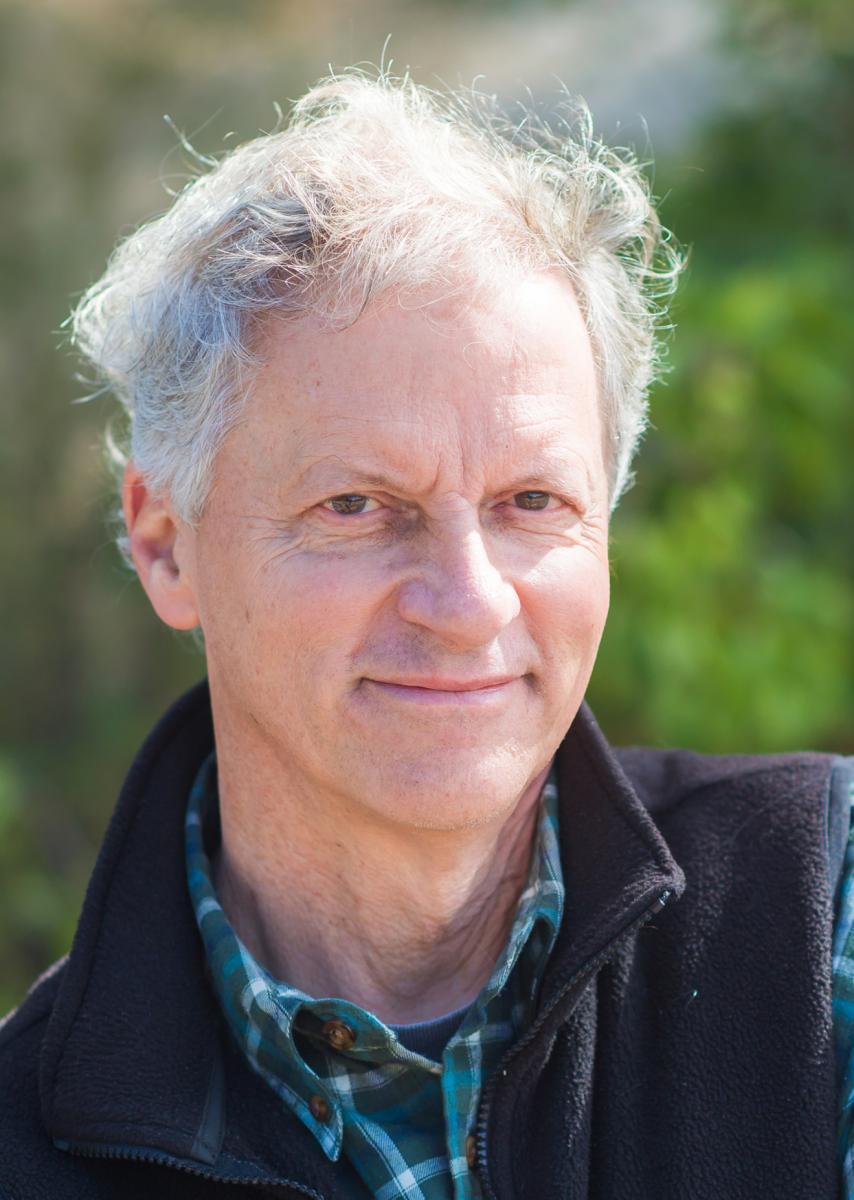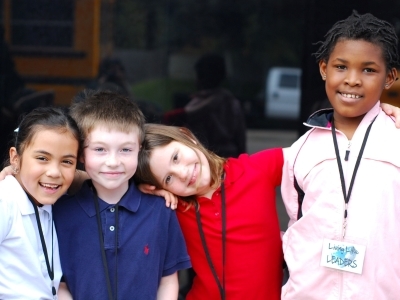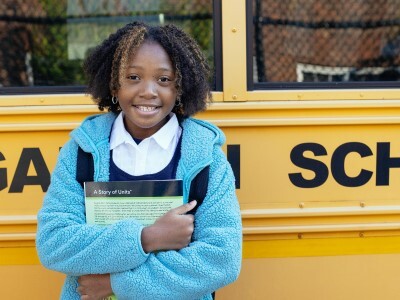The Most Important Word of the 2020s (and Maybe, the Millennium)
Topics

When educators design and create new schools, and live next gen learning themselves, they take the lead in growing next gen learning across the nation. Other educators don’t simply follow and adopt; next gen learning depends on personal and community agency—the will to own the change, fueled by the desire to learn from and with others. Networks and policy play important roles in enabling grassroots approaches to change.
You will just have to read on to find out what it is.
We were as usual strewn around the back-back of the brown Ford station-wagon, driving home from our UU church and Sunday school on Cleveland’s west side. My dad, also as usual, had heard something in the sermon to pose to us four kids as a Big Question. “What word,” he said, “would each of you nominate as the most dangerous word of the 20th century?”
There was a pause, and then a cacophony of young voices. “Slavery!” “Murder!” “Lying!” “Pollution!” “All good ideas,” my dad said. “Think even bigger. What else? What might our minister, in his sermon today, have said is the clear answer to that question?”
Sneaky dad. Something in his tone must have clued me in. “I’ll bet it’s something like: is,” I said. “I’ll bet it’s the word is.”
Bingo.
You could make a case that in the current era of competing realities, “fake” news and actual fake news—disinformation that makes Stephen Colbert’s early 2000s notion of truthiness look hopelessly naive—the word is remains the most fraught, abused, and dangerous word in the English language.
A word with the power to end systemic racism, keep the Earth safe for human and other forms of life, defeat poverty, and radically improve global health. Raise human happiness worldwide to unprecedented levels. Make America fun again.
But today we are here to dwell on a different word—a word with the power to end systemic racism, keep the Earth safe for human and other forms of life, defeat poverty, and radically improve global health. Raise human happiness worldwide to unprecedented levels. Make America fun again.
The word is: With.
Such a deceptively simple word. But what a lovely, profound, and infinite universe of meaning it carries.
Exploring the Power of With
Without knowing it at the time, I started writing this article in my head five years ago at a middle school in Colorado’s St. Vrain Valley School District. “We used to say we were moving beyond ‘Either/Or’ to ‘Both/And,’” the principal of this earnestly transforming school told our group visiting the school. “But we’ve since moved further. We believe we need to live in the land of ‘Both/With.’”
He went on to describe the distinction. Both/And, he said, is a good start, as an antidote to dumb, knee-jerk, black-or-white polarity thinking as represented by Either/Or. In education circles, we’re all too frustratingly familiar with Either/Or; just think about decades-long math wars, or unending reading wars, or the knowledge-vs.-skills wars. Why, many of us have observed, is it so darn hard to get to Both/And?
But Both/And, this educator told us, doesn’t take us all the way forward from Either/Or. Both/And still implies a parallel separateness, rather than meaningful integration. Both/With, he said, is where the real power resides. It’s only through Both/With that something new arises out of the blending of black and white, left and right, top-down and bottom-up, where elements of each side actively enable and support elements of the other. Both/And might produce a checkerboard. Both/With produces lovely, blended, subtly potent grays.
Since that visit to the Colorado middle school, perhaps without consciously knowing that we were doing it, our NGLC team has been something of a With collector. To name a few examples that have interested us:
- Organizational designers have written and experimented for decades with models aimed at confronting the “power-over” dynamic that characterizes traditional western White-dominant-culture hierarchies. More collaborative organizational models demonstrate “power-with” instead. The potential of With imbues every sentence that emergent-design thinkers like Margaret Wheatley and adrienne marie brown ever wrote. Exploring “power-with” instead of “power-over” has become a staple among movements and organizations pursuing social justice—including NGLC.
- Community-facing agencies and organizations have likewise come to see, understand, and leverage the power of With. They now see the communities they serve more as partners than as clients. The future lies more in “building with,” rather than in “providing to.”
- Activist organizations of all kinds and across virtually all social purposes, these days, demand the elevation of With. “Nothing about us without us” has moved from call-to-action for the rights of people with disabilities to a universal construct, maintaining (says Wikipedia) that “no policy should be decided by any representative without the full and direct participation of members of the group(s) affected by that policy.” Students fly this flag in seeking a role to shape the schools that do so much to shape them. Grantmakers are experimenting with participatory grantmaking in the same spirit.
We need relationships to take on big challenges. And: We do our best work when those relationships are characterized more by with than by to, or by for, or by over.
The ideas behind Both/With have roots in global Indigenous cultures, where the actualization of community—impossible in the absence of With—is a higher aspiration than the actualization of the individual. (Read Ulcca Joshi Hansen’s wonderful book, The Future of Smart, to explore these ideas within the context of public education.) Our team at NGLC has transformed many of our own organizational processes and the design of our services around the power of With through the inspiration of Blackfoot Nation culture.
In fact: we’ve gone so far as to personify the power of With in a character we now affectionately call “Co.” Co is a spirit-widget who initially showed up when we replaced the standard-practice on-boarding of new NGLC Co-Director Carlos Beato with a process we labeled co-boarding: building a whole new table, rather than inviting him to come sit at one end of our existing table. Eighteen months later, Knowledge Management Officer Kristen Vogt told the Story of Co as part of team-wide reflection on our effort to blend next gen learning with equity and social justice. “Co,” she wrote, “shows up in our Co-Director structure; Co-Design on everything from agendas to programs; Co-Building the tools we use with schools and districts; Co-Facilitating meetings and events; Co-Reflecting in triads and as a team; and Co-Empathizing, Co-Planning, Co-Monitoring, and Co-Reviewing in the reimagined growth-journey process that replaced our much more traditional annual performance review.” Co has also emerged as the driving impetus behind NGLC’s partnering with schools and school districts to catalyze change, especially Bravely—the integration of everything we’ve learned from educators since 2011.
Why Does With Have Power?
To go fast, go alone; to go far, go together, says the African proverb highlighted in recent years by the Bill & Melinda Gates Foundation, among other social purpose organizations. Pursuing progress through a commitment to With brings a great deal of complexity; every step can seem many times more complicated than simply doing it yourself. Committing to With requires patience with processes that can be aggravatingly slow; openness to strategies and solutions that are different from what you might have envisioned and fervently believed were the “right” ones; and personal and organizational vulnerability when it turns out that you were wrong.
Not only that: too much With can really gum up the works and leave everyone yearning for some old-fashioned take-charge leadership. Very likely, we’ve all seen what that looks like or have experienced it ourselves, living as we do in a messy, participatory democracy and working in a sector that, theoretically at least, values collaboration.
But: to go far, go together. Most often, in the end, don’t we generally find that it’s worth the trouble?
I think we do. And here, research suggests, is why:
- With enables growth. The research is clear. People (of all ages) learn and grow when they’re learning and working with other people.
- With catalyzes excellence. “People are simply better together,” writes Brianna Hansen in this good summary blog. Read her nine reasons why collaboration generates better outcomes.
- With builds shared purpose. “There is no power for change greater than a community discovering what it cares about,” Margaret Wheatley writes.
- With answers, and marshals, a primal human need. We have evolved as socially dependent beings. Our happiness and our health rest in good part on the strength of our relationships, according to the longitudinal (80+ years!) Harvard Study of Adult Development. Relationships are the internal motivating force that propels groups seeking to accomplish shared ends, from sports teams to micro-lending circles to army platoons. We need relationships to take on big challenges. And: we do our best work when those relationships are characterized more by with than by to, or by for, or by over.
All of that might make sense in conceptual terms, but here’s the question each of us should be asking: What does it mean, in practical terms? What does committing to With look like in the ways we live our daily lives and work at our jobs, whatever they are?
I have a simple suggestion: Lean into “With.” I mean that literally: lean into using the word. Just start replacing other prepositions with it. Use With whenever the opportunity arises, instead of and, or for, or to, or over.
For example: This past November, walking down a street in Lexington, Kentucky, at a convening of the Deeper Learning Dozen cohort of change-minded school districts, a suburban superintendent mused aloud with me about what she was observing and learning at this meeting. “I have tended to do sense-making for” her district team and principals and community, she said. “I think I need to focus on doing sense-making with.”
Kaboom. What a truckload of promise, in such a simple change!
Just try it. Less “teaching math to” and more “exploring math with.” Not “evaluating the performance of,” but “advancing the growth and potential for impact with.” Moving beyond “redefining success for today’s students” toward “redefining success with today’s students.” There is enormous complexity, of course, in actually fulfilling the power of With. But the mindshift and the world-changing benefits begin with the deliberate, committed use of one seemingly simple preposition.
What can With do for you today?
About This Series
This is the first in a series from NGLC Co-Director Andy Calkins on What We Need Now. In the spirit of co-blogging, co-reflecting, and the power of With, feel free to define the “We” in What We Need Now in whatever way appeals to you most. Also in the series:
- Why Transforming Public Education Is So Damn Hard - Our public schools mirror all the ways our society works. Changing them—really changing them—means challenging some long-accepted norms, and replacing them with… what, exactly?
- If Your Reform Doesn’t Show Up in the Learning Lives of Kids… Did It Ever Really Happen at All? - It’s time to replace “trickle-down” ed reform with change efforts that start with students and learning.
Photo at top by Pixabay on Pexels.





